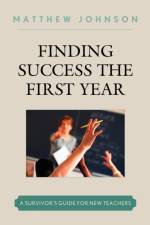av Matthew Johnson
509
Modernize grammar instruction with language lessons that inspire and engage students!Grammar and language instruction has long been, in the words of Brock Haussamen in Grammar Alive!, "the skunk at the garden party of the language arts" that turns many eager learners into disengaged participants. This type of disengagement, and resulting student struggles, have long been the norm, not the exception, when it comes to grammar and language lessons. But why? Why does grammar-something so relevant and essential that we use it in the creation of every syllable we say, write, or think-often end up as one of the dullest and most disconnected parts of the ELA classroom?Good Grammar: Joyful and Affirming Language Lessons That Work for More Students seeks to answer that question and to offer practical, on-the-ground solutions for making grammar and language instruction more accessible, practical, and connected to students' reading, writing, and most importantly, the deep well of language knowledge they bring with them already.At the core of the book are six key practices for creating language instruction that comes across clearer, sticks better, transfers easier, and ultimately instills a love of language, all while teaching major grammatical concepts. Written by a practicing classroom teacher, this book offers Ready-to-go lessons and a recommended sequence Explanation of essential grammar and language concepts for teachers who need to refresh their own understanding of grammar and language topics and concepts Over a hundred modern, engaging, wide-ranging, and diverse mentor text examples Suggestions on how to introduce important linguistic concepts into secondary classes, including lessons about how language develops; how to define, examine, and celebrate dialects/familects/idiolects; and protocols for discussing concepts like code-meshing and "correctness" Examination of broader trends concerning what works and what doesn't work in regards to grammar and language instruction, with a goal of giving teachers the tools they need to create their own grammar and language curriculum that engages, inspires, and transfers more easily into student writing and life beyond the classroom walls.The title-Good Grammar-seeks to remind us that grammar doesn't have to be boring or feel punitive. Instead, it can be a force for good for more students, affirming who they are, honoring the language expertise they bring with them, and helping them to bring their unique voices to the page.


![Good Grammar [Grades 6-12] af Matthew Johnson](https://cdnbackdoor.tales.as/thumbnail/150x225/products/00312/51957/good-grammar-grades-6-12.jpg)














![Flash Feedback [Grades 6-12] af Matthew Johnson](https://cdnbackdoor.tales.as/thumbnail/150x225/00142/23026/cover.1584916974.jpg)

